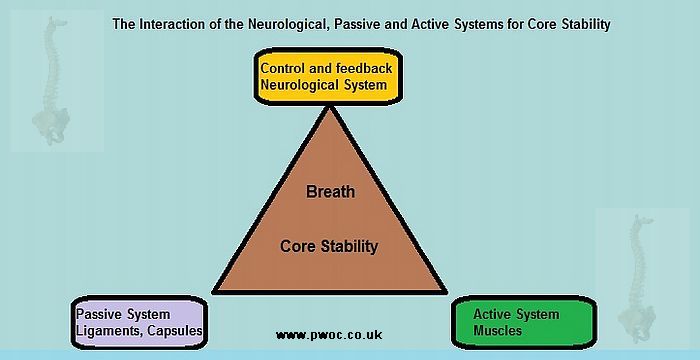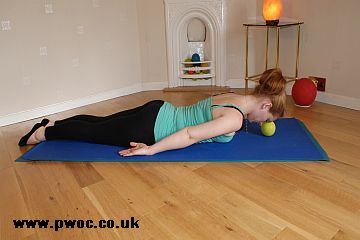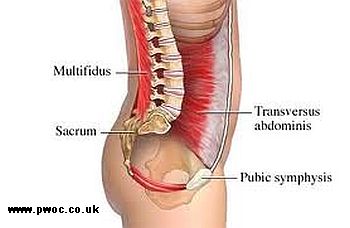Core Stability Training in Petts Wood 
Pilates Classes in Petts Wood for Core Stability
The aim of core stability training is to ensure the deep trunk muscles are working correctly to control the lumbar spine during dynamic movements, e.g. lifting a heavy object or participating in sport. Stability involves the interaction of three systems - the neurological or central control system, the passive tissues (such as ligaments and joint capsules) and the contractile system (muscles) or active system. I would also include another system - the respiratory system as the breath is fundamental to achieving good core stability.

Stabilization results from the ability of the individual to control, consciously or unconsciously, macroscopic and microscopic movements of the joint throughout it range of motion.
An instability dysfunction can occur due to poor muscle recruitment. Here the muscles that control a specific motion or series of motions are not recruited in the correct order or with sufficient force. This is a motor control problem - the person is unable to produce the proper type, rate, or speed of contraction in the individual or group of muscles to perform the movement correctly. Commonly this also involves a muscle imbalance too as well as poor base control – that is the torso which acts a s a base structure for the limbs to move about . The stabilizing muscles do not provide sufficient stiffness to allow limited motion of the base and hence the torso is pulled out of shape. In the body we can divide the bases into two primary dynamic bases or core structures - the pelvis and the scapular regions.

Therapeutic exercise to restore muscle function is an integrated part of the body of knowledge which constitutes manual therapy in the world of Sports Medicine. Manipulation or manual therapy is one of the fundamental treatment methods used by osteopaths in the management of low back pain. There is evidence that this is can be effective for the relief of pain and restoration of normal motion in the short term; but this therapy needs extending to the application of conditioning exercises to maintain and prevent the recurrent episodes of pain. Stabilization of the lumbar spine is a complex issue. The study of biomechanical and neuro-physiological models in relation to spinal stability has developed as a major research focus in the continuing search towards understanding the factors that contribute to, and the treatment of, low back pain.
What are the core muscle?
The deep trunk muscles, transversus abdominis, multifidus, internal oblique, paraspinal, pelvic floor, are key to the active support of the lumbar spine. The co-contraction of these muscles produce forces via the "thoracolumbar fascia" and the "intra-abdominal pressure" mechanism which stabilise the lumbar spine, and the paraspinal and multifidus muscles act directly to resist the forces acting on the lumbar spine.

It is not just the recruitment of these deep-trunk muscles, but how they are recruited that is important. Research showed that the co-contraction of the transversus abdominuis and mulitfidus muscles occurred prior to any movement of the limbs. This suggests that these muscles anticipate dynamic forces that may act on the lumbar spine and stabilise the area prior to any movement.
Knowing the key muscles and how they act leads to how best to train these muscles. With any type of strength and conditioning training, the training protocol for improving the function of the deep-trunk muscles must be specific to the function required. This specificity of conditioning must take into account the type of contraction, the muscle fibre type and the anatomical position required. The deep-trunk muscles act as "stabilisers" and are not involved in producing much movements, but instead involve static, or isometric, contractions. They must also act as stabilisers continuously throughout everyday activities as well as fitness and sport activities, and so require very good strength endurance.
These muscles do not need to be very strong, but they must be correctly coordinated and capable of working continuously. In addition, we want these stabiliser muscles to act by holding the lumbar spine in the neutral position, which is the correct alignment of the pelvis that allows for the natural 'S' curve of the spine. Therefore, it is important that once you have achieved proficiency of the simple core exercises, you must progress on to achieving stability during more functional movements.




